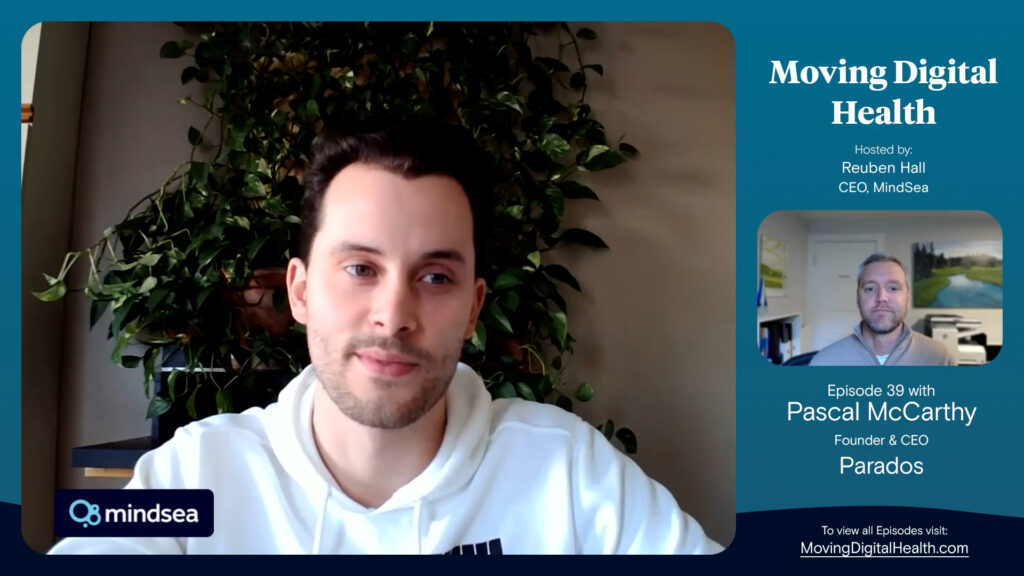We’ve all seen the buzzword disruption thrown around over the last couple of years.
Nowhere is disruption easier to see than in a mobile phone.
According to PEW Research, in the U.S. alone, 95 percent of the population has a mobile phone. And as of 2014, there were more mobile devices on the planet than people.
But take a look at this comic for an even clearer picture of disruption:

The mobile phone has taken the jobs of plenty of objects that just 20 years ago were staples in homes and offices across the country. Each year, innovators creating tech for mobile devices continue to push society forward and enhance productivity and efficiency.
But what’s next?
What will the next wave of disruption look like? Here are five ways we see mobile shaking up industries for years to come.
Redefining The Way We Shop
Do you remember when we travelled from place to place using paper maps? If you went to a new city, you would have to stop at the visitor’s center for a paper map or constantly ask strangers for directions to get where you wanted to go. Since then, Apple Maps and Google Maps have taken over the streets and sidewalks, making it easier than ever to get where you want to be (and know exactly how long it will take you to get there).
What’s next?
Maps for indoor wayfinding.
You’ve probably gotten turned around inside a shopping mall at least once in your life. Further, you’ve had to walk in-person to a specific store to see if the product you wanted was in stock. Companies like MappedIn are solving these inconveniences by working with brands to create maps for malls and stores. It can be expected that these types of in-store maps continue to become more mainstream and transition beyond malls and into things like airports, stadiums, grocery stores and any indoor location you can imagine.
https://player.vimeo.com/video/169787951
Flipping The Auto Industry Upside Down
While most people have turned their attention to companies like Lyft, Tesla and Uber as the big game changers in the auto industry, there’s a whole new wave of technologies also taking aim at the auto industry.
Buying a car can be a headache, even downright stressful.
If you asked a roomful of young people whether they would be content never to walk into a car dealership again, it’s likely that almost half would raise their hands. The dealership experience can feel sketchy and out of your control—and like a long scheme to get you to buy bells and whistles that you don’t really need.
That’s why startups like AutoGravity are putting car financing in the palm of your hand (literally) through your mobile phone. AutoGravity allows you to browse all makes, models and trims, explore the inventory at various dealerships and receive up to four fair financing offers from the dealers without ever walking in the door.
But not all startups are looking to disrupt the buying process. Some are looking to make the driving process a lot safer and are relying on data and mobile to do it.
Zendrive recognizes that 90 percent of collisions are caused by human error and that 1 in 4 are due to phone use while driving. The startup uses smartphone sensors to measure driver behavior by monitoring collisions, aggressive driving, distracted driving, and more—and then offers tailored driving advice based on the data. Zendrive is being used by individuals as well as businesses who want to keep track of (and improve) how their people are doing behind the wheel.
Giving Second Life To The Real World
We all witnessed a bit of the future when the entire world took part in a hunt for rare Pokemon last summer. While we recognize that it wasn’t just the augmented reality element of the game that caught everyone’s attention, we must also admit that this was a huge step for augmented reality developers and the industry as a whole.
But one of the biggest steps forward for augmented reality is a feature that millions of people use without even realizing it’s AR: the Snapchat lens, which has the power to turn your face into a ’70s rock star or a cute cat.
Tim Cook’s recent statements on AR demonstrate where he sees the technology going:
“It will happen in a big way, and we will wonder, when it does, how we ever lived without it. Like we wonder how we lived without our phone today.”
And there’s no doubt that huge companies like Apple, Facebook, Google and Snapchat are placing their bets on AR. Just take a look at this recent partnership between Google and Lowe’s:
But the scrappier startups aren’t throwing in the towel. Many startups like Meta Vision have already pointed their scope directly on the market and have received rave reviews from folks like Robert Scoble, will.i.am and much more.
What does the future hold for augmented reality? It’s impossible to truly predict, but the possibilities are endless. Here’s a video shared by Benedict Evans that shows just a few examples of how augmented reality could potentially change the world:
Changing The Way We Invest, Borrow And Lend Money
Mobile phones have already changed the way we pay for things thanks to services like Apple Pay and Samsung Pay. While the adoption rates for mobile payment in North America still have a ways to go, startups from around the globe are leading other kinds of innovation in the financial space. Recently, developers have begun creating and selling services that deliver bank APIs to other fintech startups, similar to what Stripe has done for payment processing.
One way that startups are pushing society forward is by making it easier for ordinary people to manage their finances on the go. For years, it felt like you needed an investment planner or high-paid financial adviser to get support for investing. Today, startups like Robinhood, Betterment and Wealthfront are striving to help millennials manage and invest their money through their mobile phones. Many of these startups have created “robot investors” that take humans out of the equation, a situation that is making many financial planners nervous about what the future holds for their careers.
Peer-to-peer lending has been going on for years without much assistance from technology, often in the form of loans sealed by a friendly handshake or a written contract. Recently, technology has opened the gates for startups to help people borrow money directly from friends and people in their network. In Asia, P2P platforms have grown increasingly popular for borrowing and lending for all kinds of situations—everything from wedding funds (guaranteed against the cash gifts that couples expect to receive) to high-yield loans for high-risk property.
Giving New Life To Health Care
We’ve all witnessed the value that a sensor being placed in a smartphone or watch can have on health care. Whether it’s counting our steps or monitoring our heart rates—integrating mobile devices into our health has offered great data, insights and a bit of fun while we strive to live healthier lives.
The healthcare industry as a whole, though, has been quite challenging for startups to shake up. It’s our belief that in the next few years, we’ll begin seeing more significant changes in the industry, not only in the way healthcare is delivered to people but also in the way people and businesses manage their health.
A big push is being made by physicians and startups alike toward care that can be administered remotely. Companies like Better PT and Dialogue allow patients to have video consultations with healthcare professionals for diagnosis. Some apps even allow patients to receive prescriptions directly over chat and send them to the pharmacy via smartphone.
Most recently, we’ve seen organizations embrace mobile apps like Changers, RunKeeper and Calm in order to gamify healthy living at work. Teams are downloading these apps and keeping a scoreboard of who’s bicycled the furthest or meditated the most over the course of a month or quarter.
What Else Does The Future Hold?
Of course, no one really knows what the future holds—be we do know it will be created by the dreamers, innovators and rule-breakers.
It’s people who see the world for what it can be that have the power to turn the future into something special. If you’re a startup looking for assistance in building a mobile app that you believe could change the world (or at least solve a pressing problem), we’d be happy to learn more about what you’re building. Get in touch!



